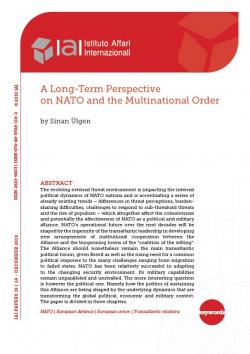A Long-Term Perspective on NATO and the Multinational Order
The evolving external threat environment is impacting the internal political dynamics of NATO nations and is accentuating a series of already existing trends – differences in threat perceptions, burden-sharing difficulties, challenges to respond to sub-threshold threats and the rise of populism – which altogether affect the cohesiveness and potentially the effectiveness of NATO as a political and military alliance. NATO’s operational future over the next decades will be shaped by the ingenuity of the transatlantic leadership in developing new arrangements of institutional cooperation between the Alliance and the burgeoning forms of the “coalition of the willing”. The Alliance should nonetheless remain the main transatlantic political forum, given Brexit as well as the rising need for a common political response to the many challenges ranging from migration to failed states. NATO has been relatively successful in adapting to the changing security environment. Its military capabilities remain unparalleled and unrivalled. The more interesting question is however the political one. Namely how the politics of sustaining this Alliance are being shaped by the underlying dynamics that are transforming the global political, economic and military context. The paper is divided in three chapters.
-
Details
Rome, IAI, December 2019, 16 p. -
In:
-
Issue
19|24 -
ISBN/ISSN/DOI:
978-88-9368-116-2
1. The transformation of the external security landscape
1.1 The early years
1.2 The 2010 Strategic Concept
1.3 The current threat environment
2. The internal landscape
2.1 Disparities in the threat perception
2.2 The burden-sharing debate
2.3 The challenge of sub-threshold threats
2.4 The dilemma of populism
3. The way forward
References
Topic
Tag
Related content
-
Ricerca22/11/2019
Transatlantic Security Symposium - 11. ed.
leggi tutto



